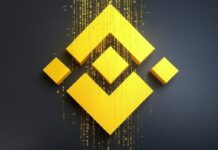introduction
In the article “Ethereum is a Dark Forest” (Ethereum is a Dark Forest), Dan Robinson and Georgios Konstantopoulos contrast the adversarial environment of Ethereum with the concept of “dark forest”. This metaphor comes from a book of the same name, which describes that “being in this environment, being discovered by advanced predators means inevitable death.”
This comparison vividly describes the Ethereum transaction pool (Ethereum mempool). In this virtual space, transactions waiting to be packaged into blocks are stored. The transaction pool is closely monitored by programs of unknown origin, which monitor the transaction and its possible final state. If it is profitable, they will use whatever means they want to run or bid for transactions. These “interests” are like prey found in the dark forest. Just like Dan and Georgios’ painful experience, it is almost impossible for them to avoid these predators, and their targets are different from those lurking in the dark.
Every layer of Ethereum is a dark forest
In the following content, I will extend the dark forest metaphor to the technology, community, and governance layers of Ethereum. Just as anyone can monitor the trading pool and profit from it, arbitrageurs can also obtain the ultimate benefits at every level, regardless of whether they consider the long-term interests of the community.
Some examples:
Technical layer: Deploy to the main network, add status to the chain, and monitor the transaction pool for preemptive action.
Community layer: Participate in the community, Twitter hot spots, and donate to Gitcoin Grants.
Governance: lobbying or opposing a certain technological change, participating in consensus, participating in All Core Dev calls.
When this happens, it feels like they get something for nothing, because they are not contributing to the infrastructure. If these people are members of other communities, the infrastructure or bandwidth that could have played a greater role is abused by them.
Although the permissionless feature of Ethereum affects every layer, we must remember that this feature is a reflection of its design. In fact, if this kind of chaos does not appear in the ecology, it is even more worrying, and the final project will be much bleak. This means lack of resistance. Fortunately, this has not happened yet. The fusion of these characteristics reflects the revolutionary nature of Ethereum, and it is worthy of our continued involvement.
Embrace the dark forest features of Ethereum
It is worth remembering that in just five years, Ethereum has achieved the following:
A collection of emerging technologies, communities and governance characteristics, and cannot be replicated in any other ecosystem
The open tool set continues to grow, anyone can experiment on Ethereum without permission
Ethereum has the characteristics of decentralization and distribution. It is an expanding global community with institutions, currencies, and non-tamperable contracts.
And these amazing attributes all exist in an ecosystem! It is precisely because Ethereum originated and grew into a “black forest”-like ecosystem that it derives the characteristics of permissionless, chaotic, and completely open.
These attributes are parallel to the favorite model of the Ethereum community: the cathedral and the bazaar. The bazaar model and the dark forest are both continuous energy sources for the community. No matter what country or background you are from, you will be able to get in touch with what we are building-this is the strong motivation for us to continue working for it.
What Ethereum can achieve
We have seen people from all over the world are using the power of Ethereum. As Virgil said: “Ethereum is an unprecedented large-scale cooperation arena”. Collaborative machines are piled on the stage: no matter what happens in the real world, the tools and infrastructure on the stage will not stop functioning. In a truly credible and neutral manner, these collaboration tools can be used for any purpose.
We need to remind ourselves again that it can be achieved on Ethereum:
An open organization anyone can join or create
Extremely transparent transaction records
Globally accessible financial markets and financial products
Community currency
Non-snatch remittance
Non-custodial financial services
Fair market for creatives
Permanent script that can be deployed on the world computer
Stateless status
Sports betting industry
Unrestricted speculation
The most valuable experience of financialization of mankind
Fraud without permission
Local resource extraction coordinated by multinational companies
When expectations are contrary to reality
In the above list, not all are positive uses. But if we overemphasize negative results, then we may doubt whether Ethereum is worth our investment.
The liquidity mining event this summer once again highlighted the differences in the community. On the one hand, some sharp voices expressed their worries about the rapid development of experimental projects, reminiscent of “The DAO” fever and ICO fever; on the other hand, many people were immersed in the carnival of this radical experiment.
There are different opinions in the community regarding the speed of Ethereum’s ecological development and in what way. The key is to understand that this is the latest performance of an old model, and as long as there are blocks generated, this model will continue. In the future, there will still be fanatical speculation and endless scams that will distort the capabilities of Ethereum.
All of this can be attributed to Molochs: this is an opportunistic monster that lives with us in the forest, whose only intention is to permanently prevent us from cooperating (thinking about Moloch). Fanatics like liquid mining have brought uncertainty to our expectations. Subvert the norms and separate the collective meaning from the individual framework-especially the gas fee skyrocketed.
These three layers (technology, community, governance) carry countless other non-community or neighboring entities. These entities sometimes use Ethereum to achieve different purposes, but they all hope to use the power of its dark forest.
They may try to use the community and governance to obtain support or funding, and their focus may even deviate from valuable projects. Some entities will eventually have a long-term negative impact on the ecosystem or regulations. Some people will incite their own fanaticism, while others will confuse the core community: what is a worthy goal and how to achieve it. Given that users do not need permission to access the technical layer, and the community and governance layers are both malleable, it is impossible to predict and prevent various possibilities.
What can the community do?
Help defeat this Moloch: We need to more accept the characteristics of Ethereum as a dark forest, which are distributed on each layer. We have to join this long-term game with a confrontational attitude. And to understand that we share every layer with various entities, whether aligned or unaligned. We need to embrace (or tolerate) uncertainty and the instability that may arise from the permissionless ecosystem.
Do we still believe that there are technologies worth developing, communities and governance models worth trying on Ethereum? If the answer is yes, then we must overcome temporary loss.
The positive effects that goal-driven can bring are as always, and will continue to evolve even if it is not obvious now. Focus on what you are determined to pursue until the things you value are recognized by others. Not just other people in the ecosystem, we welcome everyone on this planet into this dark forest.
Whether it is now or in the future, we will build it as a community. This is a large-scale collective experiment. The dark forest needs diversified interests, backgrounds and skills to support this cooperative game and cooperative machine. Here, we need to strive for a cautious voice, as well as a cry for breaking through boundaries. The community should be like this, and it is our ability to coordinate before these two poles that makes me, as always, believe that the hard work we put together will gradually become a reality.
in conclusion
Ethereum has always been a confrontational environment. When compared with other crypto platforms and communities, Ethereum’s characteristics as a dark forest make it unique. Since the technical layer, community layer, and governance layer of Ethereum are all permissionless, anyone can use or abuse these facilities. We can’t change its permissionless features, but we can adjust our attitude towards it.
In an era of rapid change and development, we must not forget our original intention. We must redouble our efforts and continue to be determined to build the dark forest of Ethereum. After all, the positive effects of these characteristics are as strong as ever.
Molochs will always live with us in this forest. While they are asleep, I will continue to build Ethereum. I hope everyone will do the same.
Thanks to Justin, Kevin, Ameen and other friends for their feedback, and Dan, Georgios and Virgil for their inspiration.




